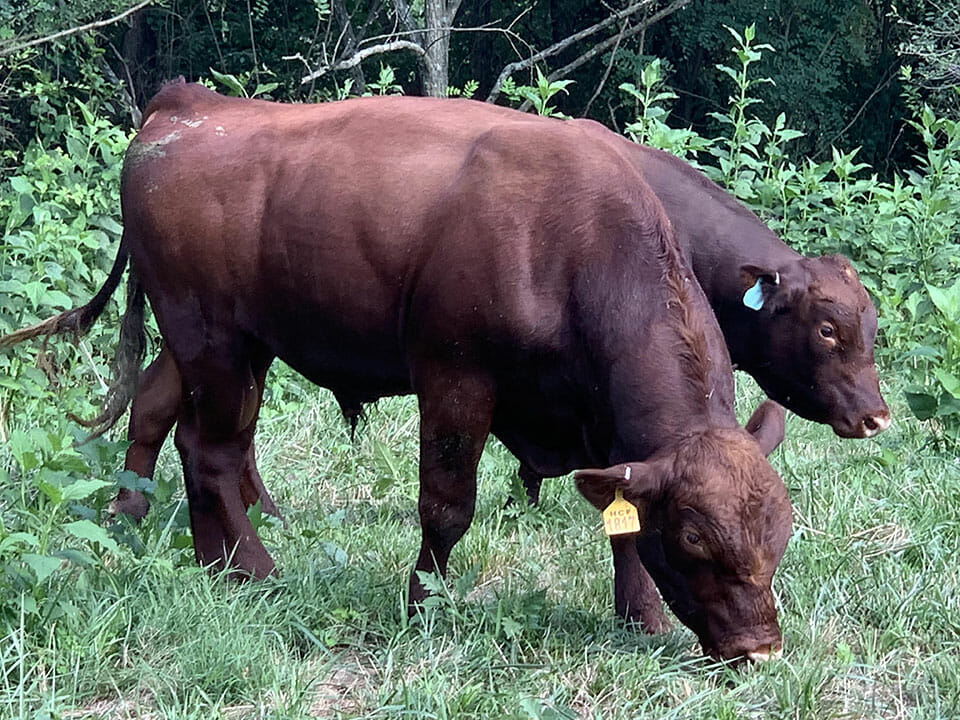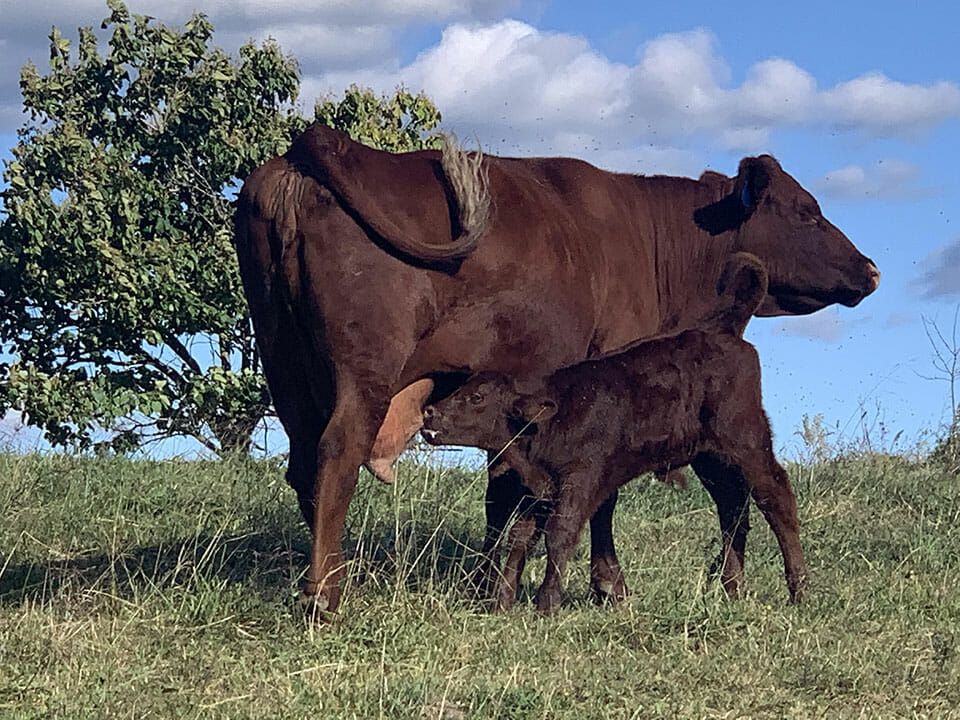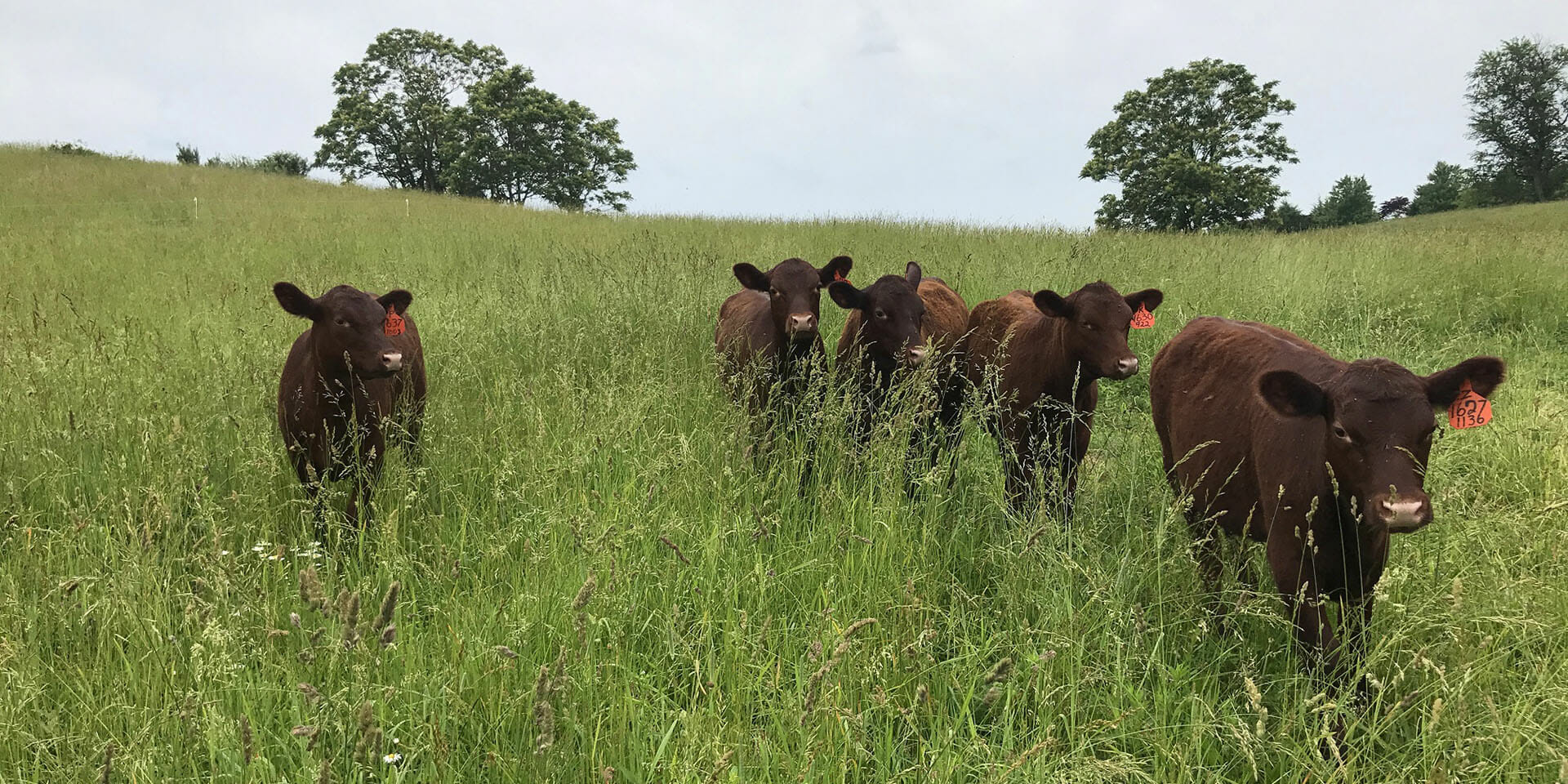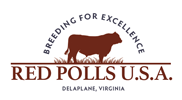History

Where do Red Poll come from?
Red Poll cattle (originally called Norfolk and Suffolk Red Polled Cattle) were selectively and deliberately bred in East Anglia, Great Britain. Red Poll are one of the original native dual-purpose breeds developed in England, prized both for the quality of their milk and of their meat. They are a cross between the Norfolk Red and Suffolk Dun. Red Poll were first shown at the Royal Show in 1862. The Red Poll Breed society was established in 1888, based primarily on the herd book published in 1874 by Henry Euren.
What prompted cattle farmers to establish the Red Poll breed?
Farmers are driven to develop new breeds and processes for several reasons:
- Maximizing output/production while minimizing input/energy use
- Maximizing predictability in an ever-unpredictable environment
- Maximizing safety and quality of life in an insecure environment

Which qualities of the Red Poll set them apart?
Red Poll cattle were specifically bred to meet all of the above requirements. The breeding criteria called for a more rapidly maturing, pasture grazed, beef animal with milk characteristics rivaling that of pure dairy breeds.
- The meat qualities of Norfolk combined with the superb milk/butter qualities of the Suffolk resulted in a cross that provided both beef and dairy options for farmers, maximizing output/production while minimizing input/energy use
- The milk qualities of the Red poll are outstanding, with a butterfat content of @4% and a protein content of @3.5%, resulting in high quality milk for calves as well as for consumption in the form of milk, butter, yogurt, and cheese. Red Poll cows produce over 12,000 lbs of milk during one lactation, leaving enough milk for both the farmer and her calf, or for the raising of two calves at the same time. The Red Poll milk production curve is long and flat, unlike the curve in most beef cattle which peaks early and tapers off quickly.
- Red Polls require only mid-level protein and mineral supplements on good forage, even on a dairy program.
- Red Polls are one of the longest, if not the longest, lived of the British bred cattle, calving well into their teens.
- Red Polls calve exceptionally easily, and rarely require assistance. While calves have a low birth weight (@65 – 80 lbs), their dam’s rich milk results in high wean weights, even in pasture-only situations. Calves are hardy, resilient, and scrappy, quickly integrating into the herd and to the pastures they are on.
- Red Polls are more productive in a changing climate and environment.
- Red Polls are tractable and easy to manage. If handled regularly and humanely throughout the year, they will allow farmers to field-check and ear-tag calves upon birth, unlike most other breeds of cattle.
Red Polls sometimes are referred to as a ‘tri-purpose’ rather than a ‘dual-purpose’ breed, as they are calm enough to pull carts or lightly plow fields in homesteading environments.

The Red Polls U.S.A Difference
What makes Red Polls U.S.A cattle different from other Red Polls?
Red Polls U.S.A., owned and operated by Hidden Creek Farm LLC, is committed to making the Red Poll breed the preeminent foundation cattle breed in the 21st century. Industrialized livestock breeding has ruined the ability of animals to survive naturally on pasture with minimal human interference, other than good pasture management. Post-industrial revolution forces focused on breeding for animals that grow way too quickly, require the input of grain or other ‘enhancers’ in order to reach both beef and dairy potentials, and are unable to sustain themselves without medications and human intervention. Red Polls U.S.A., under the leadership of Hidden Creek Farm LLC, is committed to Breeding for Excellence, both in terms of the quality of life for the cattle and the quality of product for the consumer.
- Red Polls U.S.A. breeds only cattle that are Salmonella and E. coli resistant.
- HEALTH: Yes, you can again eat red meat.
- SUPPORTING OUR FARMING COMMUNITIES
- TERROIR
- RE-INTRODUCING A THREATENED BREED
